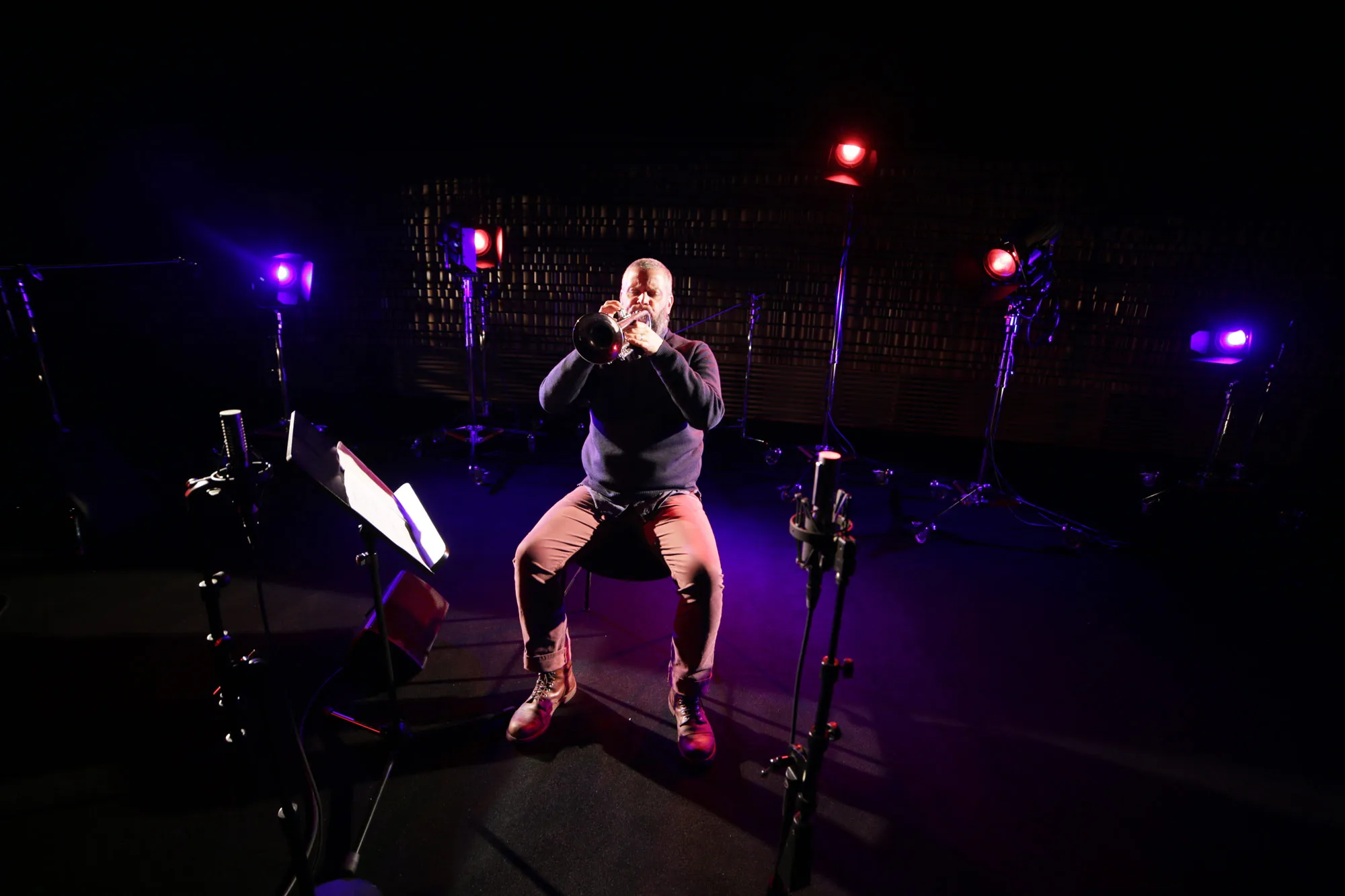
For Kenneth Gaburo
One of the most in-demand players across the Brooklyn jazz, improv, noise, and new music scenes, Nate Wooley is redefining the way the trumpet is played. In his project, For Kenneth Gaburo, Wooley refines his concept of “combinatory sound,” which blends traditional trumpet techniques with vocalizations and mouth shapes typically used for ordinary speaking. Wooley’s piece takes texts by composer Kenneth Gaburo and combines synthesized tones on tape with manipulated trumpet techniques “to create shadings of the phonetic sounds inherent in the text.”
Nate Wooley’s solo playing has often been cited as part of an international revolution in improvised trumpet. Along with Peter Evans and Greg Kelley, Wooley is considered one of the leading lights of the American movement to redefine the physical boundaries of the horn and demolish the instrument’s historical context, which is still largely overshadowed by the legacy of Louis Armstrong. Wooley’s combination of vocalization, extremely extended technique, noise and drone aesthetics, amplification and feedback, and compositional rigor has led one reviewer to call his solo recordings “exquisitely hostile.”
This performance was the culmination of Wooley’s residency in the Concert Hall recording For Kenneth Gaburo released by Pleasure of the Text records in 2017.
Main Image: Nate Wooley, For Kenneth Gaburo (2016). Photo: Mick Bello/EMPAC.
For Kenneth Gaburo* is the culmination of five years of research on mechanico-linguistic approaches to affecting the timbre of the trumpet. The work began as a way of freeing the performer of the “classical” sound tradition of the instrument. Using the many positions of the larynx, nasal passage, tongue, and teeth, which create the phonetic sounds (phonemes) that are the building blocks of the spoken word, the instrumentalist is put in a situation where he or she cannot maintain the awkward embouchure position and must allow the sound of the trumpet to fall apart, thus accepting the sound that emanates from the horn without the possibility of controlling it.
This research began with a series of solo pieces under the umbrella title of “Syllable.” [8] Syllables and [9] Syllables were recorded in 2012 and 2013 respectively and released in limited-run CDs. The performance of the pieces necessitated a specific notational system that combined symbols from the International Phonetic Alphabet (IPA), a numeral system to give rough pitch/valve combinations, and used James Tenney’s durational system of measuring note lengths by number of breaths. As the number of breaths can be anywhere from 1 to 103, the use of circular breathing is necessary. This element increases fatigue, which is necessary for the elimination of player control.
Due to the physical demands involved in the performance of these pieces, more research had to be done to make the techniques involved sustainable for the performer. The beginning of that research is For Kenneth Gaburo. The piece uses elements of the “Syllable” solo-trumpet pieces and layers them with electronic elements that intuitively shadow the elemental sound of the phonemes. The acoustic and electronic textures are combined over a series of drones to accentuate the timbral and overtone possibilities.
Although the sound material comes from an ordered set of phonemes, it is not meant to be articulated as the words and phrases from which they come. The sounds themselves are purposely stretched beyond these proportions. Each phonetic sound is repeated in the piece, so it is possible for the listener to map this recurrence if they are interested—but this is not the point. Instead, the piece is a slow, in-depth exploration of the microelements of sounds involved in human speech as related to the possibilities of the trumpet.
For the listener interested in the text, each section of For Kenneth Gaburo is based on one section of the following excerpt, taken from his introduction to Publishing as an Eco-System with David Dunn:
The creative act consists not only;
In the stipulation and formation of concrete;
Structures but in responsible maintenance of them.
*Kenneth Gaburo (1926-1993) was an iconoclastic composer, theorist, educator, ecologist, and proponent of linguistics. His work as a composer often combined research in linguistics (The Flow of [u] and Maledetto), extremely extended techniques (Mouth-Piece: Sextet for Solo Trumpet), and the use of bodily extremes (Antiphony VIII) to explore the possibilities of music making and composition. His work has been highly influential to multiple generations of students and followers including James Tenney, Allan Strange, Warren Burt, David Dunn, Chris Mann, and Larry Polansky.
—Argeo Ascani, 2016